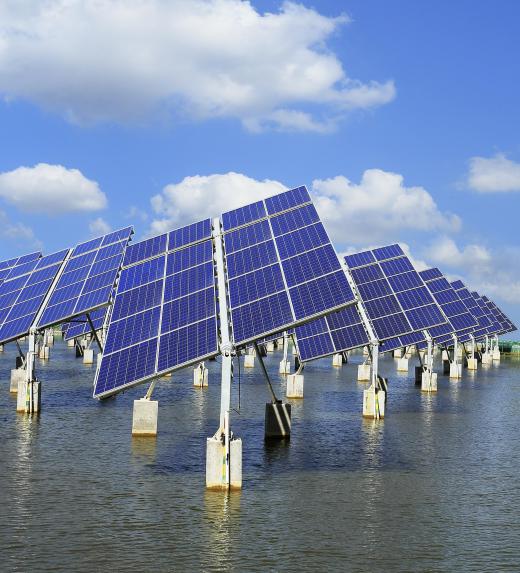A grid-tie inverter is a type of power inverter that takes direct current (DC), usually from solar panels or wind turbines, and converts it to alternating current (AC). What makes a grid-tie inverter different from other types of power inverters is that it is tied into the electrical grid, allowing excess AC current to be directed back into the grid and sold to the utility company. It is also called a grid-interactive inverter or asynchronous inverter.
In order for the grid-tie inverter to feed electricity back into the power grid, it must have the same electrical frequency. This frequency is typically 50 or 60 cycles per second, also known as Hertz. The grid-tie inverter must also use an oscillator to ensure that it does not produce a higher voltage than the power grid allows; the voltage must be slightly higher than what the grid puts out, however. A modern grid-tie inverter uses integrated circuitry to adjust its output voltage dynamically to match that of the power grid.

Many countries allow people with electrical systems that use a grid-tie inverter to sell their excess energy back to the power company, although not all utilities are required to permit it. In most cases, a system called net metering is used so that the person with excess energy receives direct compensation for the net amount of electricity that goes back to the grid. When the power flows from the building back to the grid, the power meter turns backward. A feed-in tariff may be used to compensate the energy producer for each kilowatt-hour that goes back to the power grid, according to a contract between the energy producer and utility company. The National Electric Code (NEC) regulates the construction and use of grid tie inverters in the United States.

A modern grid-tie inverter may use a high-frequency transformer to convert the current. This type of transformer goes through several steps to convert the DC power to high-frequency AC, back to DC, and then back to AC at the desired output voltage. This design requires computer control over the conversion process but results in less power loss.
Some grid-tie inverters do not use a transformer at all, which substantially reduces its weight and increases its efficiency. This design does not work well with an inverter that has a negative ground, however. Grid-tie inverters that do not use a transformer are most common in Europe because the NEC required grid-tie converters to have a negative ground until 2005.
